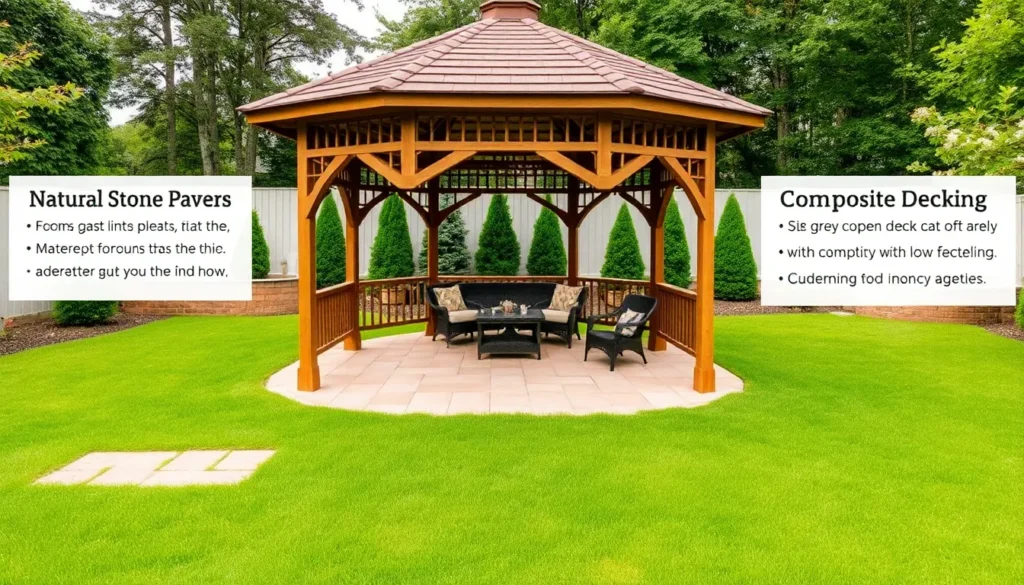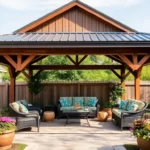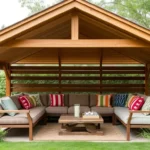Creating the perfect gazebo is an exciting journey that transforms your outdoor space into a personal retreat. Whether you’re a first-time homeowner eager to explore new possibilities or a seasoned landscape enthusiast looking to refine your haven, choosing the right flooring is crucial. It’s not just about aesthetics; the right floor impacts durability, comfort, and the overall atmosphere of your gazebo.
In this article, we’ll explore six distinctive gazebo flooring options, each with its unique advantages and drawbacks. From the rustic charm of natural stone to the sleek elegance of composite decking, you’ll gain insights that empower you to make informed decisions tailored to your style and needs. Let’s dive into the world of outdoor flooring solutions that promise both beauty and functionality for your cherished retreat.
Exploring Wooden Decking Benefits
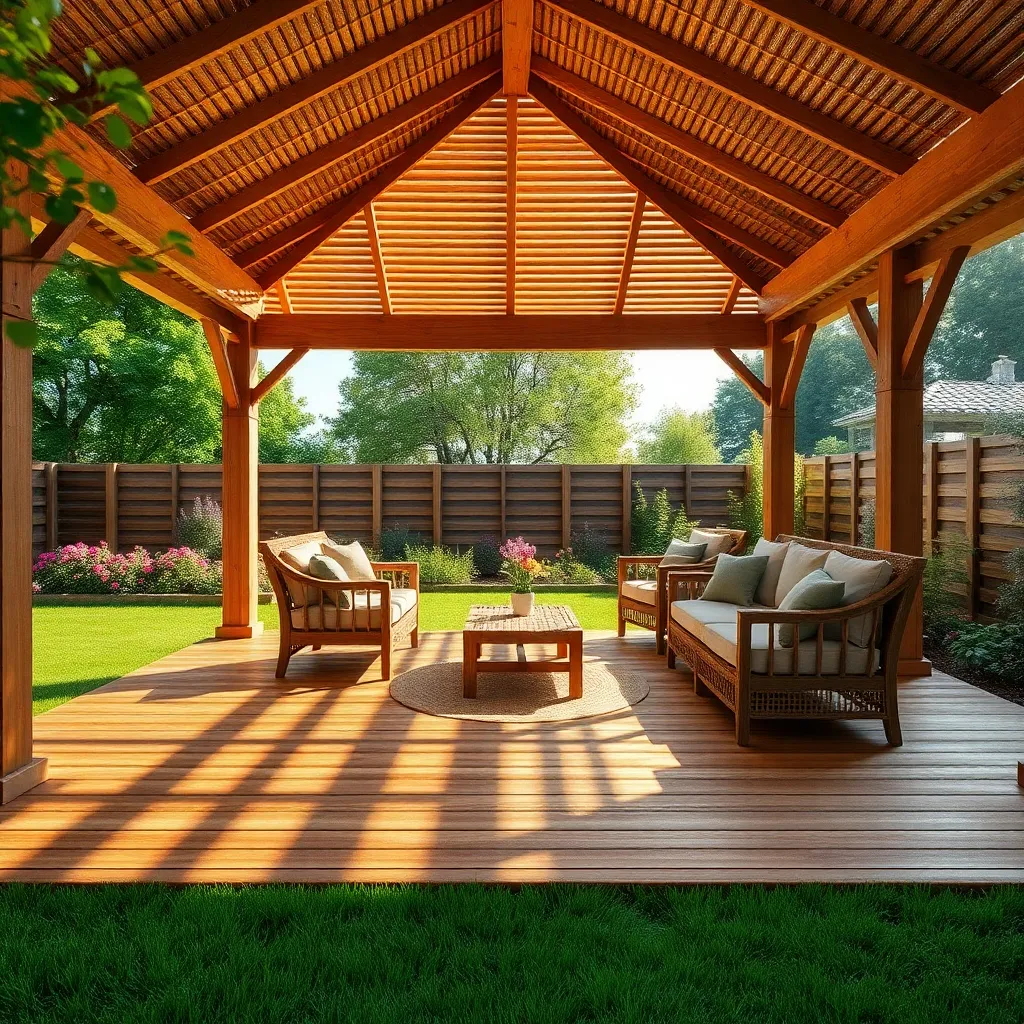
Wooden decking is a popular choice for gazebo flooring due to its natural beauty and versatility. Choose durable wood species such as cedar, redwood, or pressure-treated pine to withstand outdoor elements. These materials offer a warm, inviting aesthetic and can be customized with stains or finishes to match your outdoor décor. For beginners, a simple rectangular layout can ease the installation process, while more experienced DIYers might explore intricate patterns like herringbone for added visual interest.
Consider the practical aspects of maintenance and longevity when choosing wooden decking. Regular sealing and staining are essential to protect the wood from moisture and UV damage, extending its lifespan. Ensure your deck is built with proper drainage to prevent water pooling, which can lead to wood rot. Advanced practitioners can enhance durability by incorporating under-deck waterproofing systems. To maintain a seamless look, use hidden fasteners or color-matched screws when securing the boards.
Concrete Surfaces: Durability and Style
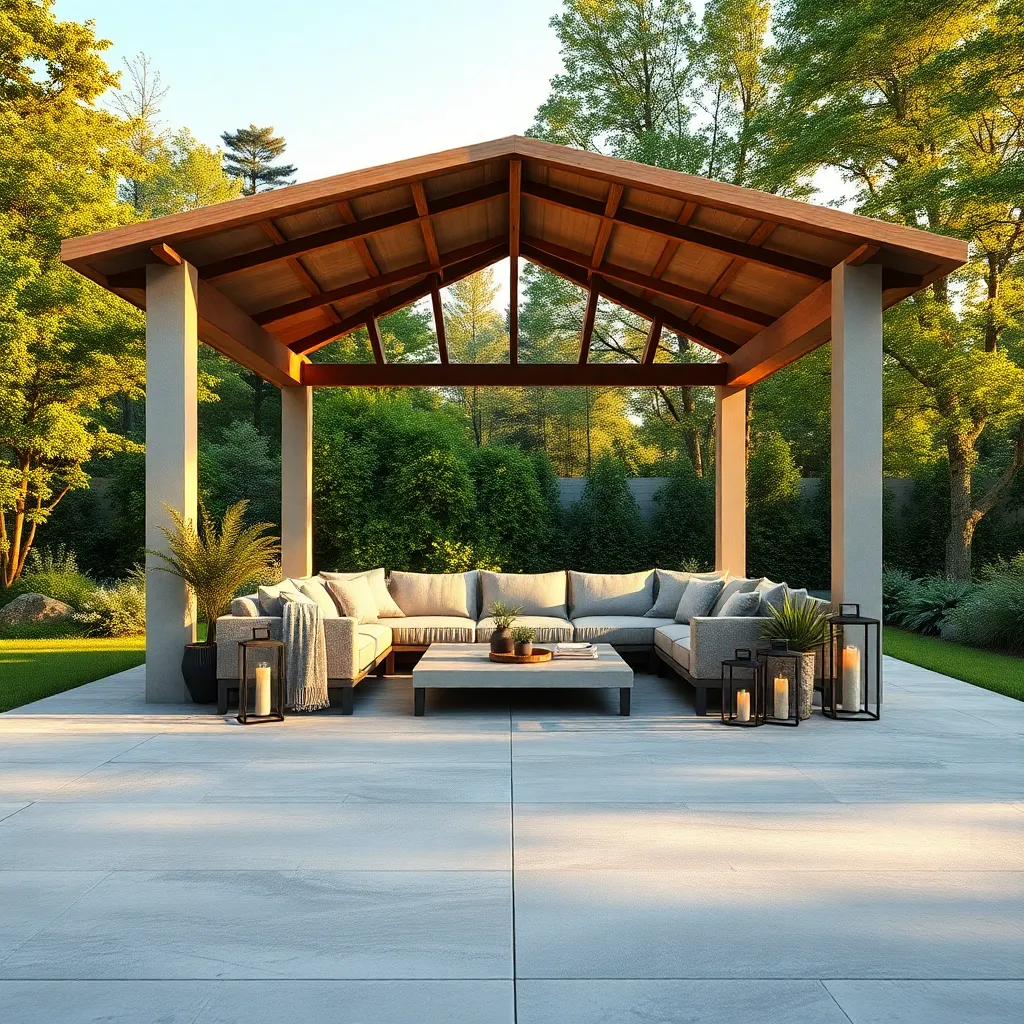
For those looking to blend durability with style, concrete surfaces for gazebo flooring offer an excellent choice. Concrete is known for its strength and longevity, withstanding weather extremes beautifully, making it ideal for outdoor use. For a basic approach, consider a simple, smooth finish, which is low maintenance and provides a clean look. For those ready to take it a step further, explore decorative techniques like stamping or staining, which can mimic other materials such as stone or wood, adding a touch of sophistication to your gazebo area.
When planning your concrete gazebo floor, consider incorporating design elements like borders or inlays to elevate its aesthetic appeal. Ensure the concrete is at least 4 inches thick to provide stability and prevent cracking over time. Adding a sealer is crucial to protect the surface from stains and enhance its lifespan. For best results, hire a professional to achieve a flawless finish and explore options like colored concrete for a unique look. Whether you’re a novice or a seasoned DIY enthusiast, concrete flooring offers a versatile foundation that enhances both function and style in your outdoor space.
Pavers for Versatile Designs
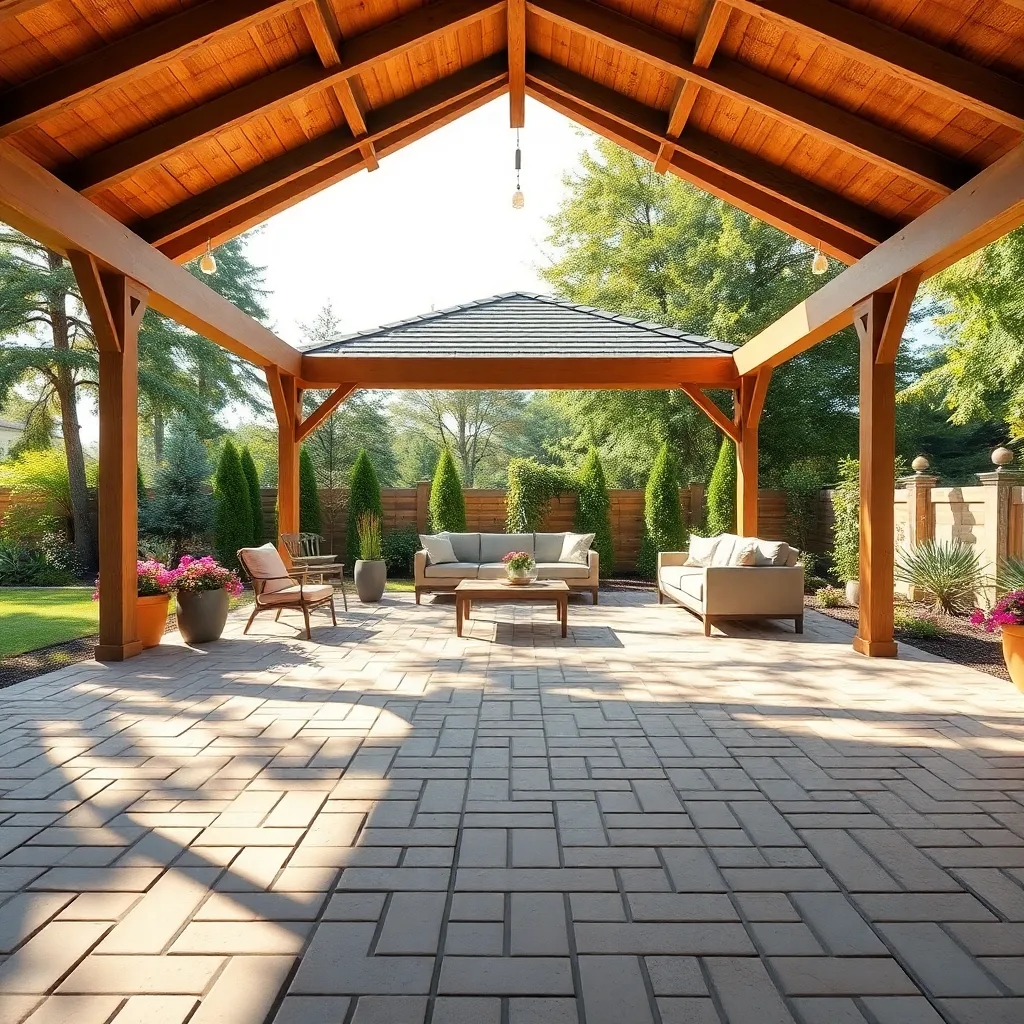
For those looking to add a touch of elegance and versatility to their gazebo, pavers offer a flexible and attractive flooring solution. Available in materials such as concrete, brick, and natural stone, pavers can be arranged in various patterns like herringbone or basket weave to suit your aesthetic preferences. Beginners will find them relatively easy to install with a level sand base, while more experienced DIY enthusiasts might experiment with creating intricate designs or using pavers with mixed textures and colors for added visual interest.
Another advantage of using pavers is their durability and low maintenance, making them a practical choice for outdoor spaces. It’s crucial to ensure proper spacing between pavers to allow for expansion and contraction with temperature changes, which helps prevent cracking. For added stability, consider using polymeric sand to fill joints, which locks the pavers in place and reduces weed growth. If you’re working with a larger area, use edge restraints to keep everything neatly in place. Whether you’re a novice or a seasoned gardener, pavers can transform your gazebo into a stunning feature of your landscape.
Gravel: Cost-Effective Simplicity
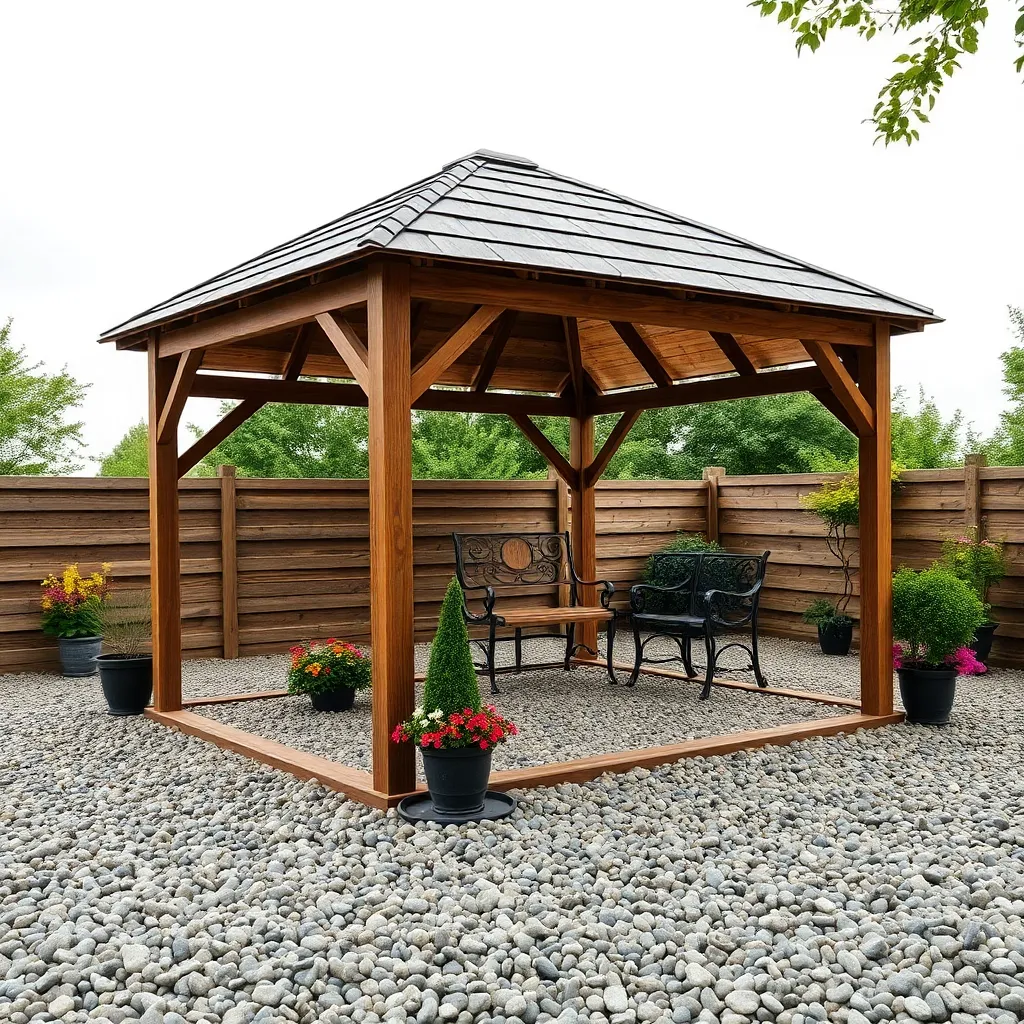
Gravel offers a cost-effective solution for gazebo flooring, perfect for those looking for simplicity and ease of installation. To begin, prepare the site by marking the area and removing any grass or debris. Lay down a weed barrier fabric to prevent unwanted growth, ensuring long-term maintenance is a breeze. Choose a gravel size between 1/4 to 3/4 inches for optimal comfort and stability, and spread it evenly with a rake for a level surface. This approach not only enhances drainage but also adds a rustic charm to your outdoor space.
For those seeking a polished look, consider edging options like bricks or metal to keep the gravel contained, which also adds a defined border to your gazebo area. A depth of about 3-4 inches is recommended to provide sufficient coverage and support. Advanced tip: mixing in some small stones or pebbles can enhance visual interest while maintaining functional benefits. Additionally, consider using landscape lighting around the edges to highlight the texture and create a welcoming ambiance during evening gatherings. With minimal materials and effort, gravel provides a durable and adaptable base for your gazebo.
Composite Decking: Low-Maintenance Appeal
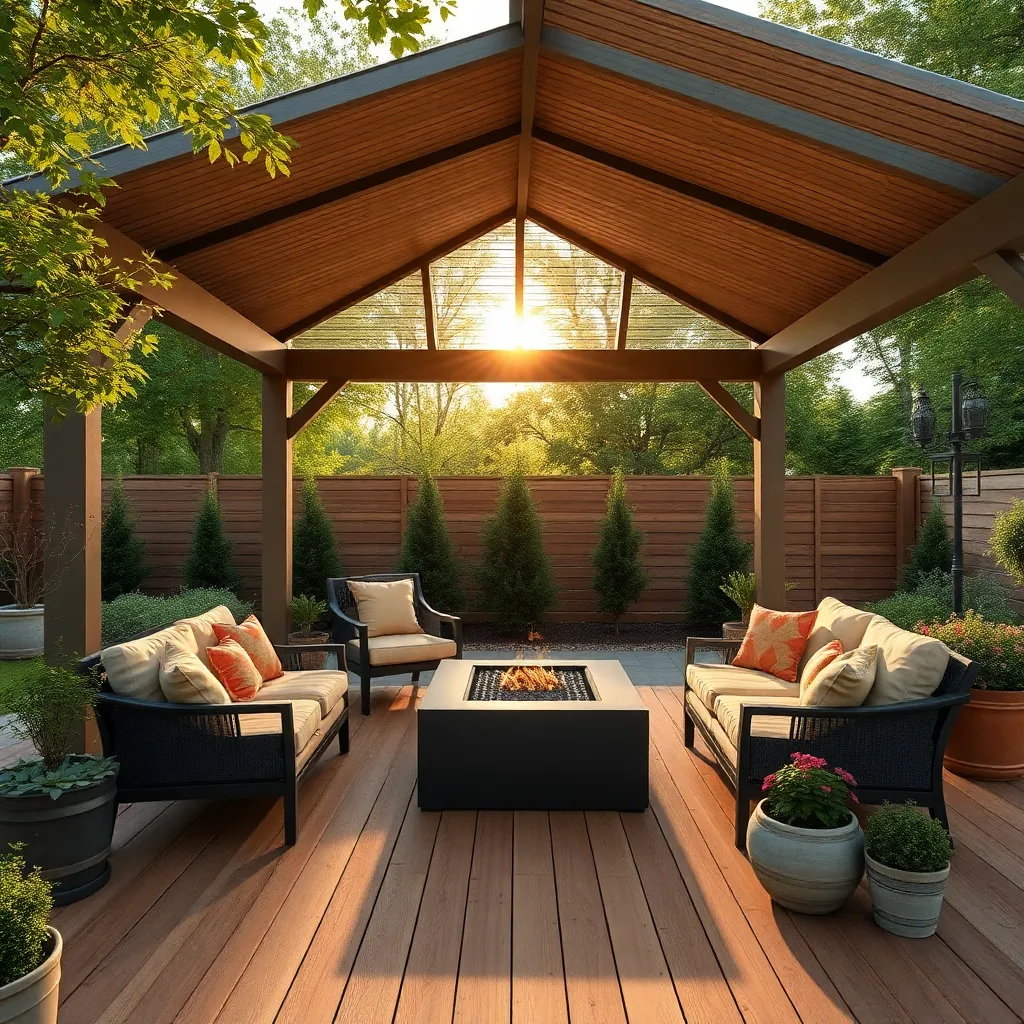
Composite decking offers a durable and low-maintenance option for gazebo flooring, making it an attractive choice for busy homeowners. It is made from a blend of wood fibers and recycled plastics, which means it resists rot, warping, and insect damage. For those new to outdoor projects, selecting boards with built-in UV protection can help maintain their color and appearance over time. When installing, ensure a sturdy substructure with joists spaced no more than 16 inches apart for optimal support.
For a polished look, consider incorporating hidden fasteners to keep the surface smooth and free from visible screws. Advanced DIYers might explore using composite decking that mimics natural wood grains for an upscale aesthetic. When planning your design, think about adding edge trims or skirting for a finished appearance. Regular cleaning with soap and water will keep the surface looking fresh, making composite decking a practical choice for those who want beauty without the hassle of heavy maintenance.
Outdoor Tiles: Elegant and Practical
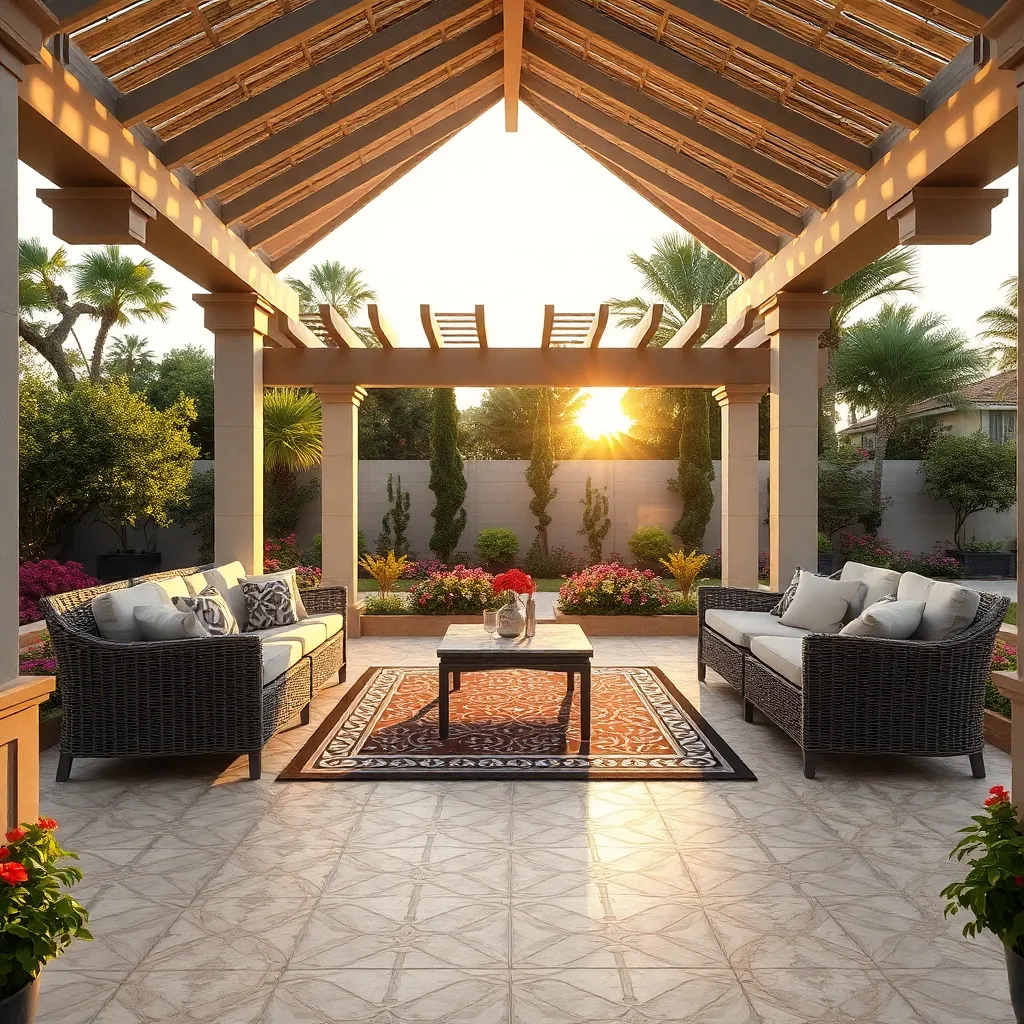
Outdoor tiles offer an elegant and practical solution for gazebo flooring, blending style with functionality. Choose from a variety of materials such as porcelain, ceramic, or natural stone, each bringing its own aesthetic and durability. Porcelain tiles are particularly popular for their resistance to moisture and temperature fluctuations, making them ideal for various climates. Beginners will appreciate that these tiles are relatively easy to clean and maintain, while seasoned DIYers can explore intricate patterns or mosaic designs to add a personal touch.
For a seamless installation, ensure your chosen tiles are specifically rated for outdoor use to withstand the elements. Pay attention to slip resistance ratings, especially if you live in a region prone to rain. Expert tip: when laying tiles, use a proper grout mix designed for outdoor settings to prevent cracking and ensure longevity. Consider using larger tiles, such as 12×24 inches, to minimize grout lines and create a more open, cohesive look under your gazebo. By focusing on these details, you can craft a flooring foundation that’s both stunning and enduring.
Conclusion: Creating Beautiful Outdoor Spaces
In this exploration of gazebo flooring options, we’ve unraveled the strengths and challenges of six distinct choices: the classic charm of natural wood, the durability of composite decking, the affordability of concrete, the elegance of stone pavers, the ease of interlocking tiles, and the rustic appeal of gravel. Each option offers unique benefits that cater to different aesthetic tastes and practical needs, much like the diverse dynamics in relationships.
As you contemplate the best choice for your outdoor haven, take a moment to draw parallels to your relationships. Consider what foundational qualities you value and where you might need to invest more time or effort. An immediate step you can take is to assess one area of your relationship that could use a bit more attention and action on it today, whether it’s through a meaningful conversation or a shared activity.
To ensure these insights are readily available when you need them, bookmark this article as your go-to resource for nurturing both your gazebo project and your relationships. Remember, just like building a sturdy gazebo floor, fostering strong relationships requires thoughtful selection and maintenance. Embrace these choices, and step confidently toward a future filled with relationship success.

